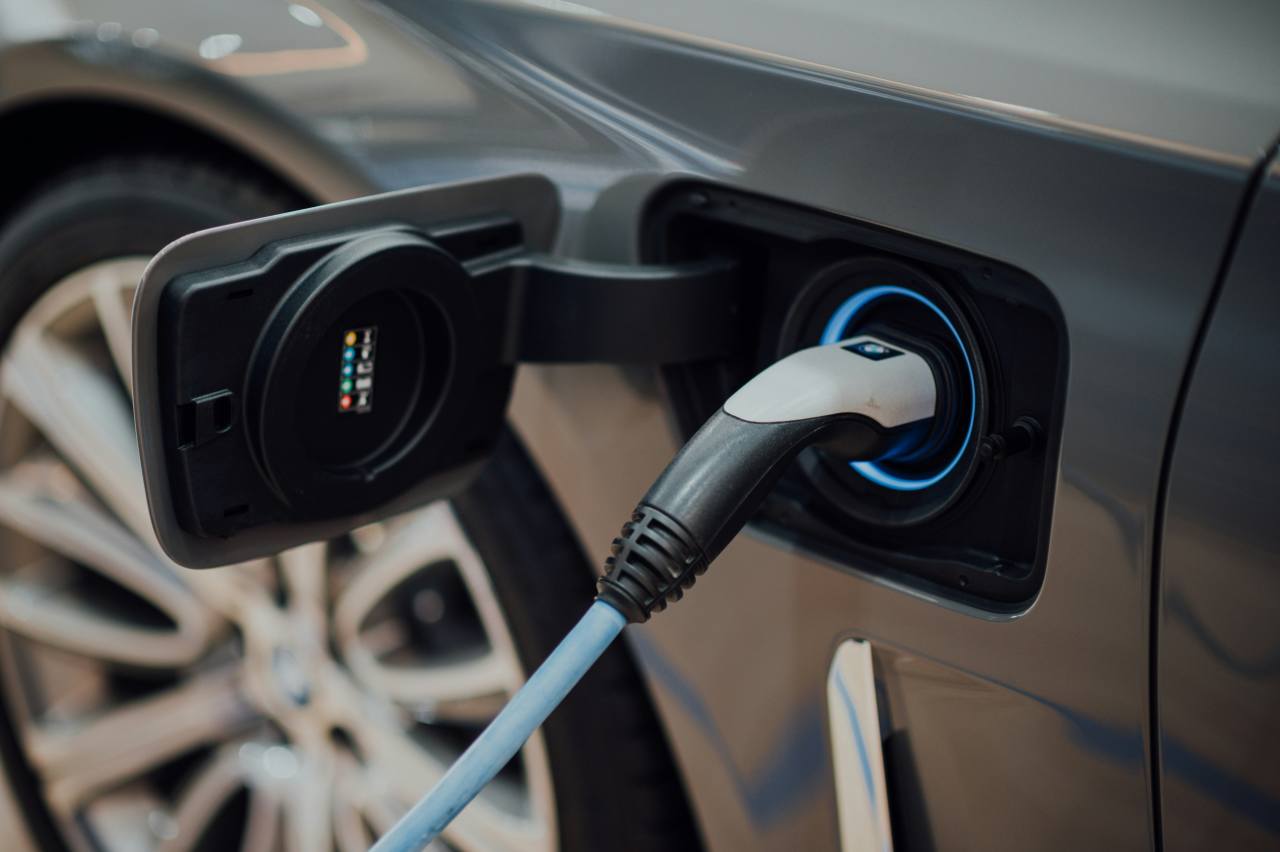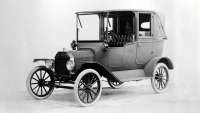A hybrid car works by utilising both a petrol-powered internal-combustion engine (ICE) and an electric motor that is powered by a battery.
There are also diesel hybrid cars, but these are far less common - petrol hybrids are like birds, diesel ones are a bit more like dodos.
If the thought 'How does a hybrid car work?' has ever crossed your mind, the answer is they are vehicles that have a rechargeable battery pack that works in conjunction with a conventional internal combustion engine.
But it’s not that simple. Unlike a pure electric vehicle where electricity powers an electric motor, completely doing away with the need for fossil fuels and their harmful emissions, a hybrid is a bit of a two-bob each way proposition.
Which is why a hybrid car and how hybrid cars work is a tiny bit more complicated.
Hybrid car technology is usually divided into three main types: a mild hybrid (also known as power-assist hybrids and battery-assisted hybrid vehicles or BAHVs), a hybrid electric vehicle (HEV) and a Plug-in Hybrid Electric Vehicle (PHEV).
In any case, though, the broad principal is the same. An electric motor working in conjunction with a fossil-fuel one.
Each have different-sized battery packs, different ways those battery packs are charged and different ways in which the ICE and electric motor work in conjunction with each other to power the car. So, in each of those cases, how does a hybrid engine work?

Mild Hybrid
Hybrid engines consist of a traditional ICE and an electric motor powered by a hybrid car battery, although in a mild hybrid the former is the main source of power, while the latter is usually used only when the car is coasting, braking, or stopped.
While some hybrids have an electric-only mode, mild hybrids do not. The electric motor is only used to mildly assist the car’s combustion engine and is never relied on fully as the car’s main source of power.
It can, however, be used to power the car’s air-conditioning or other systems to save fuel.
Mild hybrids may also use regenerative braking, a process where kinetic energy that’s created from the car slowing down can either be stored away for later in the battery, or can be used to power the electric motor directly.

The electric motor in a mild hybrid is usually mounted between the internal-combustion engine and transmission, and often takes on the role of the starter motor to crank the petrol engine.
A BAHV or mild hybrid will reduce your fuel consumption and emissions, but not by a whole lot. You’ll want a HEV or PHEV if you want to make any kind of meaningful difference to the amount of petrol you use and the emissions your car creates.
Mild hybrids are particularly favoured by makers of performance cars that need to add a little oomph now and then and save a small amount of fuel, but don’t want to detract from the visceral or sporty appeal of an ICE driveline.
Hybrid Electric Vehicle (HEV)
A full hybrid places a bit more emphasis on the use of the battery-powered electric motor, meaning both it and the battery itself will be significantly larger compared to those found inside a mild hybrid.
HEVs make use of regenerative-braking technology to recharge the car’s battery and power the electric motor, forgoing the need to ever have to plug-in the battery to charge it (more on that later).
There are varieties of HEVs, however, that use the ICE to turn an electrical generator, which can either recharge the vehicle’s battery or directly power the electric motor.
.jpg)
Think of a diesel-electric locomotive which uses a diesel engine to produce electricity, but that engine never directly powers the wheels, only the electric motor.
Then add a battery pack to store electricity for later so the diesel engine doesn’t have to run all the time, and you’re looking at the same concept.
That said, most modern HEVs use a combination of electric and petrol power to drive the wheels when the driver demands full performance.
In an effort to further reduce emissions, many HEVs (like many cars in general) also employ a stop-start function where the ICE is shut down whenever the car is idle (if you’ve ever heard a car’s engine cut out and then quickly restart again while you’re waiting at traffic lights, that’s what’s going on).
HEVs typically use the ICE as the primary source of power while the battery-powered electric motor acts as a kind of 'power boost' to assist during different driving conditions, like when the vehicle requires rapid acceleration.
.jpg)
But many also offer an electric-only mode where the car can be forced into a mode where only battery power is used.
Thanks to the relatively small size of the battery-pack, however, this EV mode typically only lasts a few kilometres.
HEVs are becoming increasingly popular due to their ability to reduce emissions and save on fuel costs when compared to traditional ICE vehicles.
Their big advantage is in urban running where stopping and starting means frequent recharging of the battery.
On the highway at a steady speed, they offer little or no advantage over a conventional car in terms of fuel economy and emissions.
.jpg)
Plug-in Hybrid Electric Vehicle (PHEV)
These hybrids do exactly what you think they do... plug in to an external electric power source to charge up their battery packs, rather than relying solely on other forms of energy-generating technology, like regenerative braking.
The clever bit is that even though they plug in to recharge, they will also regenerate energy from braking on the move as with any other form of hybrid.
The battery pack and electric motor is typically a much more substantial part of a PHEV, meaning they’re bigger, heavier and take longer to charge compared to the smaller batteries you’d find in a HEV or mild hybrid.
The benefit, though, is that the battery offers the PHEV a sizeable range of electric-only running (and thus zero-emission motoring).
This also reduces the 'range anxiety' experienced by EV drivers, worried their battery will run out of charge while they’re in transit, as the petrol engine is always there on standby to kick in and take over should the battery become depleted.
.jpg)
PHEVs aren’t completely green, due to the fact they still employ the use of an ICE from time to time, and the electricity they use can often be generated using harmful fossil fuels.
Renewable, zero-emission electricity generated by means such as wind power, solar energy or hydroelectricity can also be utilised, however, to further reduce the impact of a PHEV.
Generally speaking, a PHEV will have enough battery capacity to allow you to do your usual daily commute before charging again overnight.
If you do that consistently, you’ll only ever use electricity for your running. And on longer trips to regional areas, the petrol engine remains your back up and, even without the opportunity to recharge, the car will keep going while ever you keep putting petrol in it.
Most PHEVs will, however, force the ICE to start periodically to keep internal components lubricated and to avoid fuel going stale.
.jpg)
The future of hybrids
Hybrid vehicles are expected to continue growing in popularity in the coming years, with hybrid sales projected to keep rising until they peak in 2027 with a global market value of $792 billion.
At the moment, for example, hybrid is definitely the way forward for many Australian car owners as public recharging infrastructure lags behind the rest of the developed world, making EVs less than viable for many.
And until governments get serious about a charging network, the heavy lifting is being left to private organisations like EV companies and motoring clubs.
Some manufactures such as Toyota have seen a huge take-up of hybrid variants of their popular models, with some hybrid models easily outselling their non-hybrid stablemates.
There’s also a decent chance hybrids using lithium-ion batteries will eventually be superseded by full-electric cars that use a hydrogen fuel cell, but that technology is still some years away from hitting the consumer market in a meaningful way.






.jpg)
.jpg)



.jpg)
.jpg)

.jpg)

_0.jpg)
.jpg)
.jpg)




